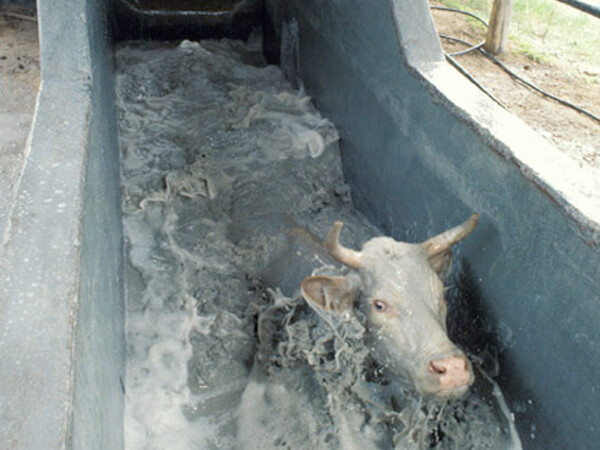this is a construction that allows to completely immerse livestock in a liquid that contains an acaricide.

- Plunge dips are either fixed and made of concrete (typical for cattle and sheep) or portable (usually metallic, mainly for sheep and seldom for pigs)
- Plunge dipping is the most effective way to control ticks on animals effectively, especially inside the ears and behind the tail, the preferred site of many ticks.
- However, failure of tick control can occur if the correct procedures are not used.
- Plunge dip tanks are the preferred method of dipping large numbers of cattle.
- If constructed and used correctly plunge dips ensure complete wetting of the animal, particularly the important areas such as inside the ears and under the tail where ticks are found.
- It is essential to keep accurate dipping and replenishment records; under strength dipping leads to inadequate tick control and tick resistance to acaricides.
- Every animal, except very small calves and heavily pregnant cows must be dipped every dip day. Any animal not going through the plunge must be hand-sprayed or dressed.
- Fixed dips must be long, wide and deep enough to ensure that the animal gets completely immersed when plunging and have to swim a few metres before touching the bottom
